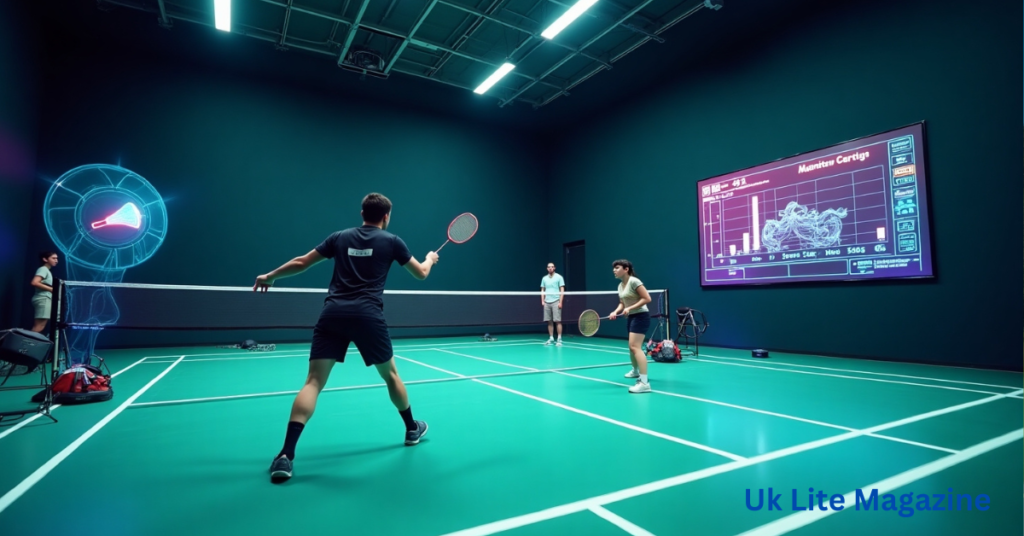Badminton, once a simple sport requiring only a racket and shuttlecock, has evolved significantly with advancements in technology. From smart rackets to AI-powered coaching systems, technology is revolutionizing the way players train, compete, and analyze their performance. In this article, we will explore how technology contributes to badminton and what the future holds for smart gameplay.
The Role of Technology in Badminton
Technology plays a crucial role in modern badminton, enhancing player performance, accuracy, and the overall viewing experience. Innovations such as Hawk-Eye tracking, smart rackets, and AI-based coaching tools have transformed the sport in various ways. Below, we explore some key technological advancements in badminton.
1. Hawk-Eye Technology for Line Judging
One of the most significant advancements in badminton is the Hawk-Eye technology, which helps in accurate line judging. This system uses multiple high-speed cameras positioned around the court to track the shuttlecock’s movement. The data collected is analyzed to determine whether a shot is in or out, reducing human errors in umpiring decisions. It has made the game fairer and more precise, ensuring players are judged correctly.
2. Smart Rackets for Performance Analysis
Modern badminton rackets now come equipped with smart sensors that analyze various aspects of a player’s game. These sensors track metrics like shuttle speed, shot accuracy, and swing power. Data collected from smart rackets is transmitted to a smartphone app, allowing players to assess their strengths and weaknesses and make improvements accordingly.
3. AI-Based Coaching and Training Systems
Artificial Intelligence (AI) is becoming an essential part of badminton training. AI-based coaching tools analyze a player’s movements, shot patterns, and strategies to provide detailed feedback. These systems help coaches and players fine-tune their gameplay by suggesting improvements based on real-time data. AI-powered simulations also allow players to practice against virtual opponents, enhancing their skills in a controlled environment.
4. Wearable Technology for Fitness Monitoring
Fitness plays a vital role in badminton, and wearable technology like smartwatches and fitness bands help players monitor their heart rate, calorie burn, and endurance levels. These devices provide real-time feedback, allowing players to adjust their training routines for optimal performance. Some high-end wearables also track footwork patterns, helping athletes improve their movement on the court.
5. High-Speed Cameras for Motion Analysis
High-speed cameras capture slow-motion footage of player movements, helping coaches analyze techniques like footwork, racket swings, and shot precision. This technology is widely used in professional training centers to help athletes refine their playing style and reduce injuries by correcting improper movements.
6. Smart Shuttlecocks for Data Collection
In recent years, technology has even been integrated into shuttlecocks. Smart shuttlecocks contain microchips that track speed, rotation, and trajectory, providing valuable insights for both players and analysts. This innovation allows for a deeper understanding of shuttle dynamics and helps in strategic planning during matches.
The Future of Smart Gameplay in Badminton
The future of badminton is expected to be even more technology-driven. Here are some potential advancements that could shape the sport in the coming years:
- Virtual Reality (VR) Training: Players could train in simulated environments, practicing against virtual opponents with realistic gameplay.
- AI Umpires: Advanced AI systems might replace human referees, ensuring 100% accuracy in decision-making.
- Enhanced Biomechanics Analysis: Future wearable devices could provide real-time feedback on muscle movements, preventing injuries and optimizing performance.
- 5G-Enabled Live Analytics: Real-time data streaming during matches could offer instant analysis to players and coaches, improving in-game strategies.
Conclusion
Technology has revolutionized badminton, making it more precise, engaging, and competitive. From Hawk-Eye systems ensuring fair play to AI-driven coaching and smart equipment, the game is undergoing a massive transformation. As innovations continue to emerge, the future of badminton promises an era of smart gameplay where data-driven insights will redefine how players train and perform.
Frequently Asked Questions (FAQs)
1. Which of the following technologies is used in badminton?
Several technologies are used in badminton, including Hawk-Eye tracking, smart rackets, AI coaching tools, wearable fitness devices, and high-speed cameras for motion analysis. These advancements help improve player performance and enhance game fairness.
2. Which technology is used in badminton review?
Hawk-Eye technology is commonly used in badminton review systems. It utilizes multiple high-speed cameras to track the shuttlecock’s path and determines whether a shot is in or out. This system ensures accurate decision-making and minimizes human errors in officiating.
3. How is science used in badminton?
Science is used in badminton through biomechanics, aerodynamics, and material engineering. Biomechanics helps players optimize movements and reduce injuries, while aerodynamics influences shuttlecock design for better flight stability. Material science contributes to the development of lightweight yet durable rackets and shuttlecocks.
4. Is badminton a technical sport?
Yes, badminton is a highly technical sport. It requires precise skills in footwork, shot accuracy, and strategy. Players must understand angles, speed variations, and shuttle trajectory, making use of technology to refine their techniques and enhance their gameplay.

